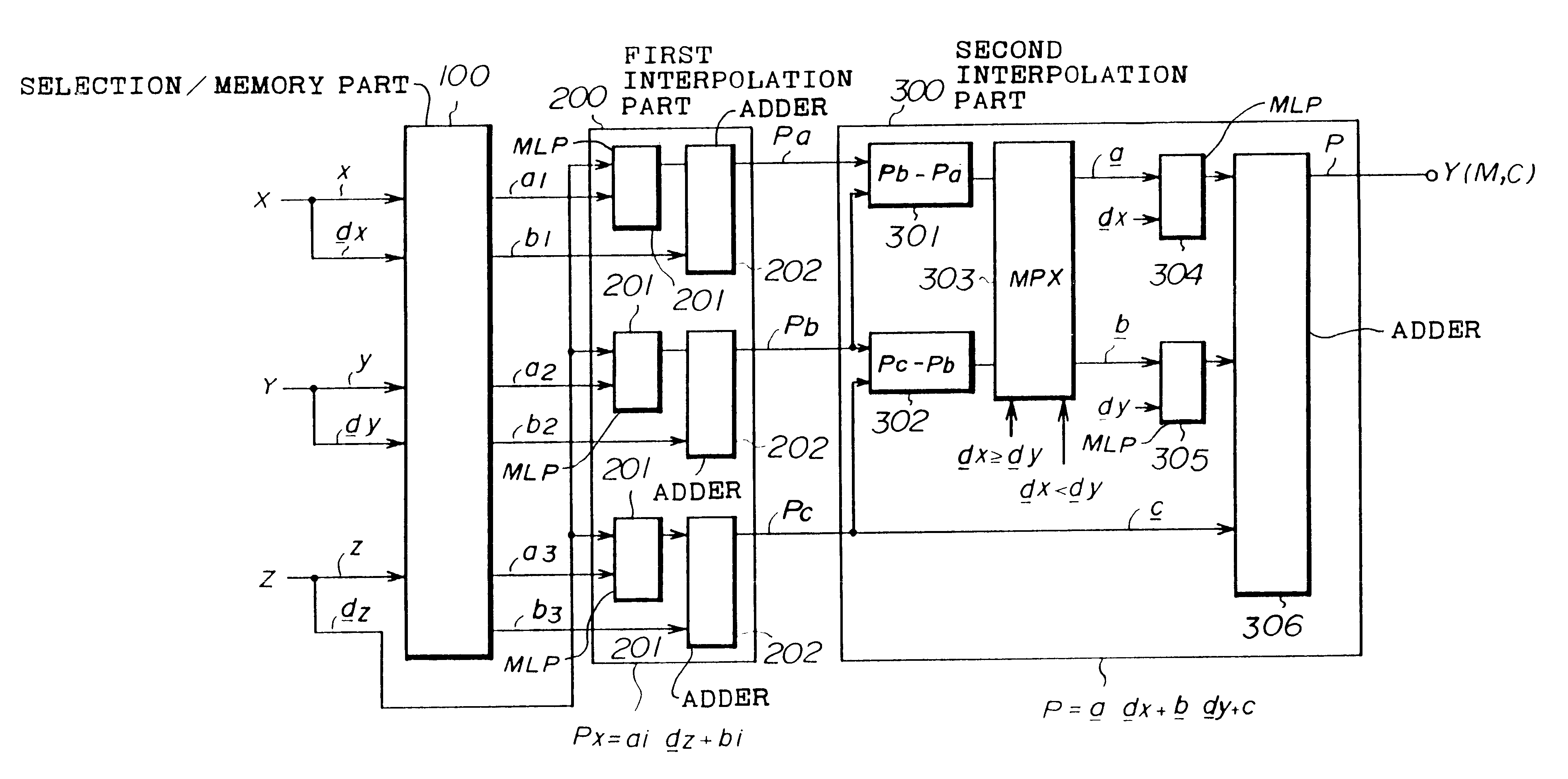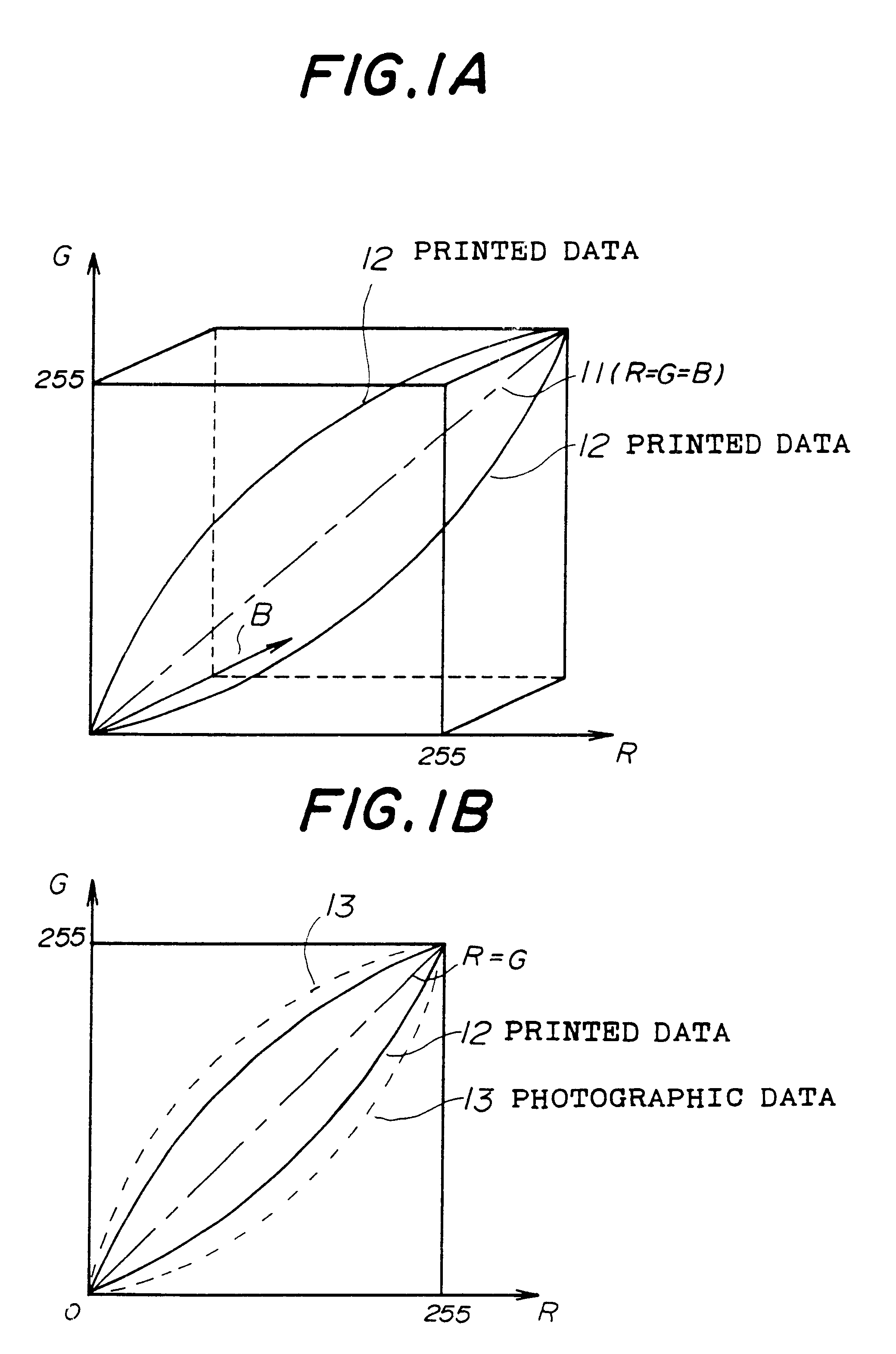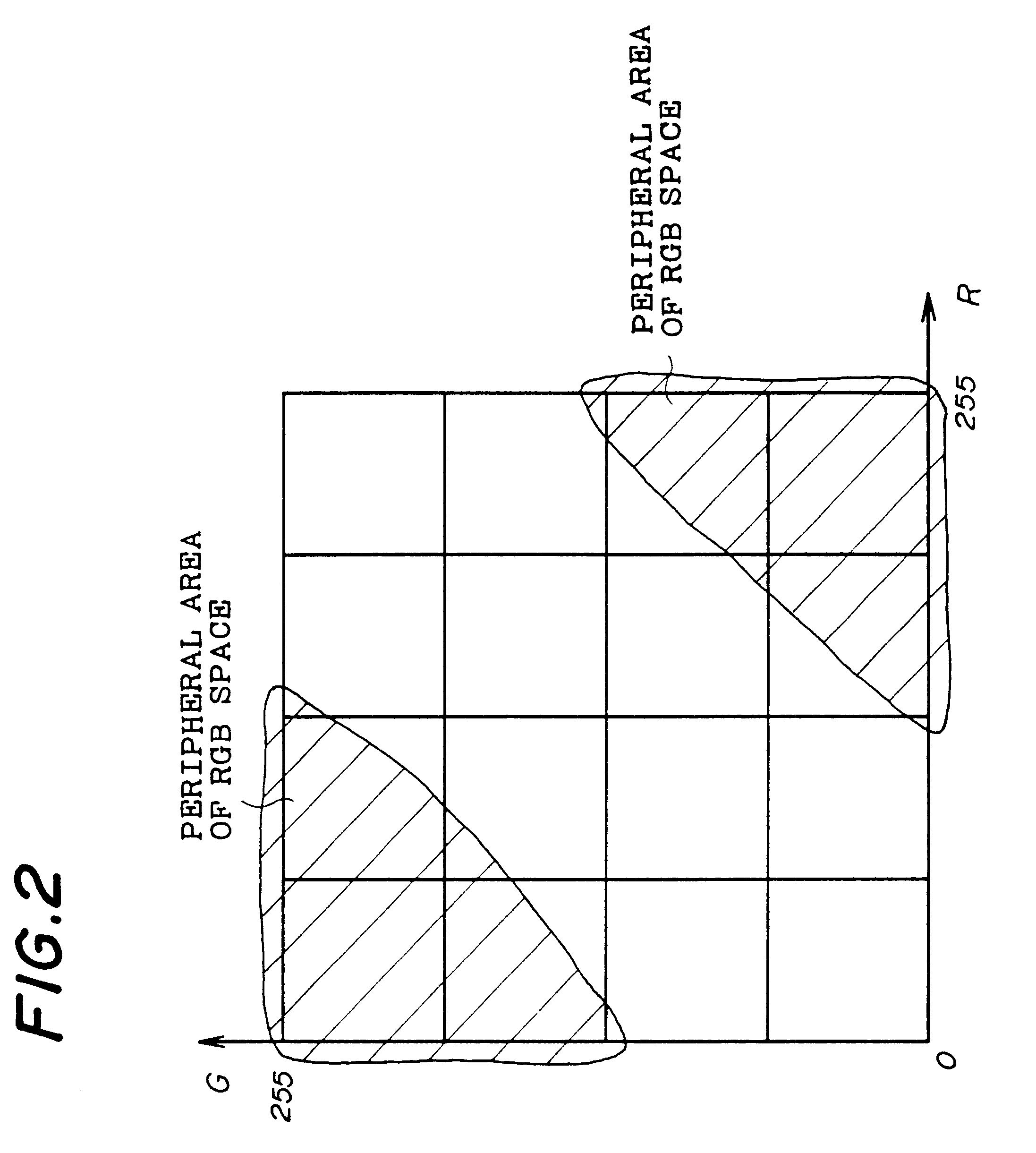Interpolation method and color correction method using interpolation
- Summary
- Abstract
- Description
- Claims
- Application Information
AI Technical Summary
Benefits of technology
Problems solved by technology
Method used
Image
Examples
second embodiment
Next, a description will be given of a lo color correction apparatus in the present invention, with reference to FIG.15. In FIG.15, this color correction apparatus includes a read-only memory (ROM) 131, an interpolation part 132 having a random access memory (RAM) 133, a Y signal part 134, an M signal part 135 and a C signal part 136, and a central processing unit (CPU) 137. In the ROM 131, predetermined output data corresponding to lattice points in a triangular prism is stored. For example, when input signals X, Y and Z are divided into four parts, the output data stored in the ROM 131 has a storage capacity equivalent to 64 bytes per color signal. The interpolation part 132 having a construction like that of the first interpolation part 200 or the second interpolation part 300 shown in FIG.3 loads the predetermined lattice point data corresponding to the lattice points, stored in the ROM 131, into the RAM 133 when color correction is started. By making reference to the data loade...
third embodiment
FIG.16 shows a color correction apparatus is the present invention. In FIG.16, this color correction apparatus has a construction that is essentially the same as the second embodiment described above, except that the color correction apparatus shown in FIG.16 includes a picture processing part 138 For example, this picture processing part 130 performs color correction or adjustment of the lattice point data stored in the ROM 131, thereby allowing the color correction apparatus of the third embodiment to perform color correction flexibility.
Next, a description will be given of a color correction apparatus in a fourth embodiment of the present invention. In the above mentioned embodiments, lattice point data Pi (i=1 to 6) corresponding to lattice points of a triangular prism are predetermined. However, in this fourth embodiment, a setting method to predetermine output data corresponding to lattice points of a triangular prism is used for interpolation, and this setting method can be u...
fifth embodiment
A detailed description will be given of a setting method to preset output data corresponding to eight lattice points of a triangular prism, which is used for the interpolation method in this fifth embodiment of the invention. In the color copier shown in FIG.18, density data (R, G, B) for the color pattern data is measured from Y, M and C color signals supplied by the color correction circuit 164 before the UCR process is performed. The Y, M and C color signals include 4913 (=17.sup.3) data which are obtained by dividing halftone levels of color signals (Y, M, C) (each having bits indicating 256 halftone levels) in 16 stages, as follows. Y: 0, 15, 31,..., 239, 255 M: 0, 15, 31,..., 239, 255 C: 0, 15, 31,..., 239, 255
FIG.19 shows an example of output data which are obtained by scanning the 4913 color pattern data (color patch data) and measuring the results of color correction performed by the color copier shown in FIG.18. The output data is used as the predetermined color correction...
PUM
 Login to View More
Login to View More Abstract
Description
Claims
Application Information
 Login to View More
Login to View More - R&D
- Intellectual Property
- Life Sciences
- Materials
- Tech Scout
- Unparalleled Data Quality
- Higher Quality Content
- 60% Fewer Hallucinations
Browse by: Latest US Patents, China's latest patents, Technical Efficacy Thesaurus, Application Domain, Technology Topic, Popular Technical Reports.
© 2025 PatSnap. All rights reserved.Legal|Privacy policy|Modern Slavery Act Transparency Statement|Sitemap|About US| Contact US: help@patsnap.com



